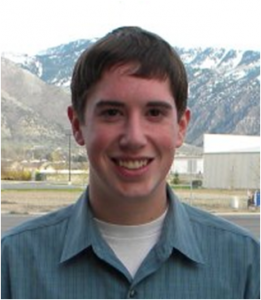Vikas Chandan: Modeling and Control of Complex Hydronic Systems
 Buildings account for around 40% of the total energy consumption and contribute more than one-third in greenhouse emissions in the nation. A significant percentage of this can be attributed to the heating and cooling systems in the existing building stock. My research aims to explore advanced modeling and control tools for the development of smart and practical technologies which shall make complex, centralized building Heating, Ventilation & Air Conditioning (HVAC) systems more efficient from energy as well as thermal comfort and reliability perspectives.
Buildings account for around 40% of the total energy consumption and contribute more than one-third in greenhouse emissions in the nation. A significant percentage of this can be attributed to the heating and cooling systems in the existing building stock. My research aims to explore advanced modeling and control tools for the development of smart and practical technologies which shall make complex, centralized building Heating, Ventilation & Air Conditioning (HVAC) systems more efficient from energy as well as thermal comfort and reliability perspectives.
Joseph Fasl: Dynamic Modeling of Thermal Energy Storage
 Currently, HVAC technology for heavy transportation faces great challenges when attempting to regulate zone temperature under peak loading conditions. This results in widely varying zone temperature profiles, suboptimal consumption of fuel, and the emission of more exhaust. By capturing excess capacity from the HVAC system during periods of off-peak loading in the form of thermal energy storage (TES), the overall efficiency of transport HVAC systems will increase. My current research aims to develop a modeling framework that can simulate various configurations of integrating TES into the transport HVAC unit.
Currently, HVAC technology for heavy transportation faces great challenges when attempting to regulate zone temperature under peak loading conditions. This results in widely varying zone temperature profiles, suboptimal consumption of fuel, and the emission of more exhaust. By capturing excess capacity from the HVAC system during periods of off-peak loading in the form of thermal energy storage (TES), the overall efficiency of transport HVAC systems will increase. My current research aims to develop a modeling framework that can simulate various configurations of integrating TES into the transport HVAC unit.
Neera Jain: Optimization and Control of Integrated Energy Systems
 I am developing a generalizable, scalable, and control-oriented optimization framework for a wide class of integrated energy systems (IESs). IESs combine prime-mover technologies, such as internal combustion (IC) engines, steam turbines, and/or fuel cells, with technologies which directly utilize the power produced by the prime-mover and/or the thermal energy otherwise wasted in the production of power, such as thermally-activated heating systems, vapor-compression refrigeration systems, and/or energy storage systems. These systems are becoming more prevalent because of their environmental, reliability, economic, and efficiency benefits. However, to fully realize their benefits, effective optimization and control of IESs is necessary.
I am developing a generalizable, scalable, and control-oriented optimization framework for a wide class of integrated energy systems (IESs). IESs combine prime-mover technologies, such as internal combustion (IC) engines, steam turbines, and/or fuel cells, with technologies which directly utilize the power produced by the prime-mover and/or the thermal energy otherwise wasted in the production of power, such as thermally-activated heating systems, vapor-compression refrigeration systems, and/or energy storage systems. These systems are becoming more prevalent because of their environmental, reliability, economic, and efficiency benefits. However, to fully realize their benefits, effective optimization and control of IESs is necessary.
Megan Kania: Heat Load Modeling in Tactical Aircraft
 Modern tactical aircraft are subjected to a wide variety of thermal loadings, both internal and external. Moreover, these loads are highly transient resulting in a complex interplay of individual subsystems. These subsystems are nonlinear with different time scales of operation thereby making a dynamic representation challenging. The goal of my research is to create models and modeling tools for the time accurate representations of these transient thermal phenomena. A key to the approach, apart from speed and accuracy, is to retain sufficient physics within the models as to make them predictive.
Modern tactical aircraft are subjected to a wide variety of thermal loadings, both internal and external. Moreover, these loads are highly transient resulting in a complex interplay of individual subsystems. These subsystems are nonlinear with different time scales of operation thereby making a dynamic representation challenging. The goal of my research is to create models and modeling tools for the time accurate representations of these transient thermal phenomena. A key to the approach, apart from speed and accuracy, is to retain sufficient physics within the models as to make them predictive.
Justin Koeln: Dynamic Modeling of Multi-evaporator HVAC Systems
 Many refrigeration and air-conditioning applications require temperature regulation of multiple spaces with varying desired temperatures and thermal loads. Multi-evaporator vapor compression systems utilize a single compressor and condenser in combination with multiple expansion devices and evaporators to regulate multiple spaces at different temperatures with a single system. The coupled nature of these evaporators makes the dynamic modeling of these systems especially challenging. My current efforts focus on the development of widely applicable and versatile models of these systems and the experimental validation of these models.
Many refrigeration and air-conditioning applications require temperature regulation of multiple spaces with varying desired temperatures and thermal loads. Multi-evaporator vapor compression systems utilize a single compressor and condenser in combination with multiple expansion devices and evaporators to regulate multiple spaces at different temperatures with a single system. The coupled nature of these evaporators makes the dynamic modeling of these systems especially challenging. My current efforts focus on the development of widely applicable and versatile models of these systems and the experimental validation of these models.
Bin Li: On-Off Modeling and Control
 On-off control is a common capacity control method in A/C & R systems. My current research, from the modeling point of view, focuses on understanding system transient behaviors upon compressor on-off cycling operations by using switched modeling approach. From the control applications perspective, I am researching advanced model-based on-off control approaches, such as optimal on-off control, for improving system performance, component lifetime and energy savings.
On-off control is a common capacity control method in A/C & R systems. My current research, from the modeling point of view, focuses on understanding system transient behaviors upon compressor on-off cycling operations by using switched modeling approach. From the control applications perspective, I am researching advanced model-based on-off control approaches, such as optimal on-off control, for improving system performance, component lifetime and energy savings.
Matthew Williams: Dynamic Modeling of Aircraft Thermal Systems
 Modern air vehicles are complex “systems of systems” encompassing the domains of high-performance engines and thermodynamic cycles, electric power, thermal energy, propulsion, reliability management, and others. Previously, these systems could be designed and operated in relative isolation from each other with acceptable results. As modern systems become increasingly integrated, it becomes essential that these systems be designed and operated in concert, in a manner that optimizes the multi-objective outcome. For example, the complete system should maximize its operating domain while being able to accommodate significant transients.
Modern air vehicles are complex “systems of systems” encompassing the domains of high-performance engines and thermodynamic cycles, electric power, thermal energy, propulsion, reliability management, and others. Previously, these systems could be designed and operated in relative isolation from each other with acceptable results. As modern systems become increasingly integrated, it becomes essential that these systems be designed and operated in concert, in a manner that optimizes the multi-objective outcome. For example, the complete system should maximize its operating domain while being able to accommodate significant transients.